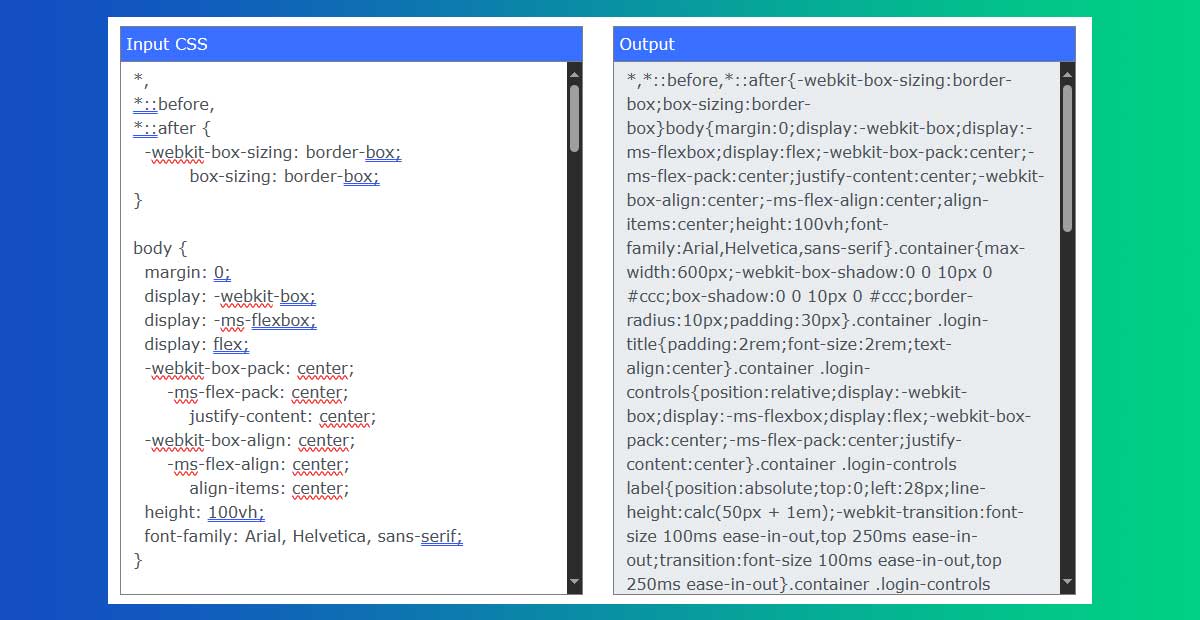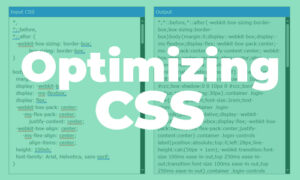Outline of the Article:
- Introduction
- Understanding CSS Optimization
- Importance of Optimizing CSS
- Techniques for Optimizing CSS
- Examples
- Media Queries and Responsive CSS
- Importance of Browser Compatibility
- CSS Frameworks and Performance
- Conclusion
Optimizing CSS for Better Performance

Introduction
In the realm of web development, CSS (Cascading Style Sheets) plays a pivotal role in determining a website’s visual appeal and functionality. However, ensuring optimal performance while using CSS can significantly impact a site’s speed and user experience.
Understanding CSS Optimization
CSS optimization involves refining and streamlining stylesheets to enhance website performance. It includes various techniques and practices aimed at reducing file size, minimizing render-blocking resources, and enhancing loading speed.
Importance of Optimizing CSS
Optimizing CSS is crucial as it directly affects page load times, user experience, and search engine rankings. A leaner CSS code ensures faster rendering, leading to improved site performance and increased user engagement.
Techniques for Optimizing CSS
- Minification: This involves removing unnecessary whitespace, comments, and reducing code redundancy, effectively minimizing file size.
- Concatenation: Merging multiple CSS files into a single file reduces HTTP requests, thereby enhancing load times.
- Removal of Unused CSS: Identifying and eliminating unused CSS code helps reduce file size and improves loading speed.
- Reduce Redundancy: Creating reusable styles and avoiding repetitive code aids in optimizing CSS.
Examples
- Minification: Consider a CSS file containing numerous comments, unnecessary spaces, and redundant code segments. Through minification, these elements are eliminated, resulting in a more concise and efficient stylesheet.
/* Original CSS */
body {
font-family: 'Arial', sans-serif;
color: #333;
/* ...more styles... */
}
/* Minified CSS */
body{font-family:'Arial',sans-serif;color:#333;}
- Concatenation: Instead of loading multiple CSS files separately, combining them into one reduces server requests and speeds up page loading.
Original:
<link rel="stylesheet" href="styles1.css">
<link rel="stylesheet" href="styles2.css">
Concatenated:
<link rel="stylesheet" href="all-styles.css">
- Removal of Unused CSS: Tools like PurifyCSS can detect and remove unused CSS, ensuring only necessary styles are loaded, thus enhancing performance.
JavaScript:
purifyCSS(content, css, {
rejected: true,
whitelist: ['is-visible', 'header']
});
- Reduce Redundancy: Employing CSS preprocessors or frameworks like SASS or LESS aids in writing cleaner, more organized code, reducing redundancy.
SCSS/ SASS
@mixin flex-center {
display: flex;
justify-content: center;
align-items: center;
}
.container {
@include flex-center;
/* other styles */
}
Media Queries and Responsive CSS
Creating responsive designs with media queries ensures compatibility across various devices, contributing to an optimized user experience.
Importance of Browser Compatibility
Ensuring CSS compatibility across different browsers is essential for consistent rendering and functionality, preventing performance issues.
CSS Frameworks and Performance
Using CSS frameworks can streamline development, but excessive reliance might lead to bloated stylesheets. Opt for modular or customized frameworks to maintain performance.
Conclusion
Optimizing CSS is indispensable for enhancing website performance. By implementing techniques like minification, removal of unused CSS, and prioritizing browser compatibility, developers can significantly boost site speed and user satisfaction.
FAQs
- What is CSS optimization?
- CSS optimization involves refining stylesheets by employing various techniques to enhance website performance, such as reducing file size and improving loading speed.
- Why is optimizing CSS important for website performance?
- Optimizing CSS is crucial as it directly impacts page load times, user experience, and search engine rankings, resulting in improved site performance and increased user engagement.
- How can I reduce redundancy in CSS?
- You can reduce redundancy in CSS by using preprocessors like SASS or LESS, creating reusable styles, and avoiding repetitive code segments.
- What are some common techniques to optimize CSS?
- Common techniques include minification, concatenation, removal of unused CSS, reducing redundancy, and ensuring browser compatibility.
- What role does browser compatibility play in CSS optimization?
- Browser compatibility ensures consistent rendering and functionality across different browsers, preventing performance issues and ensuring a seamless user experience.








